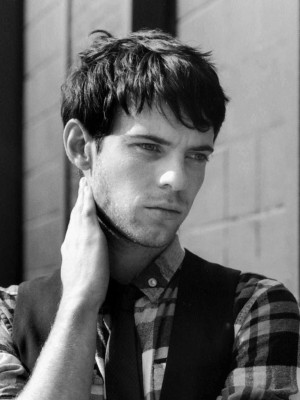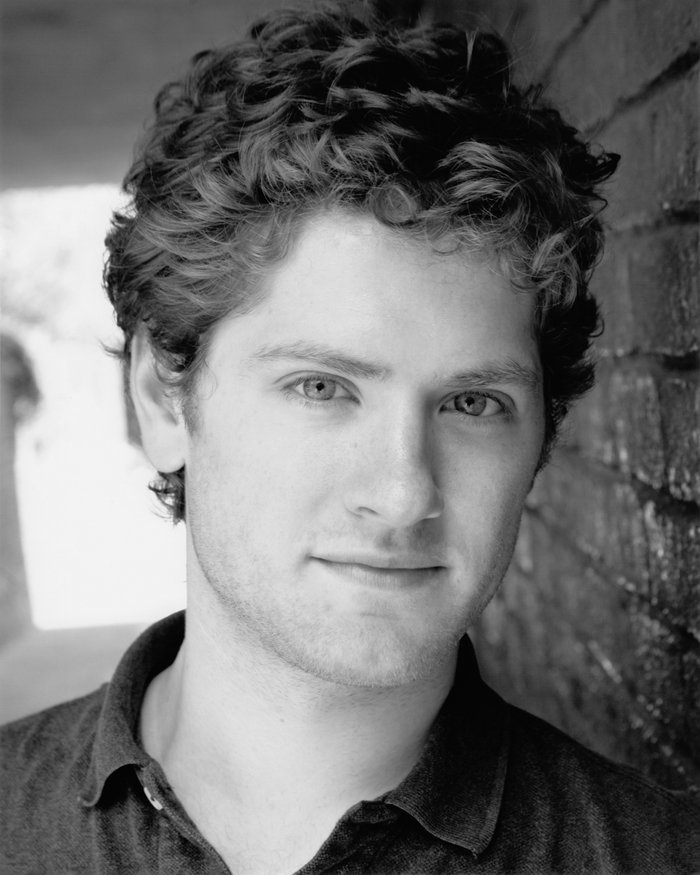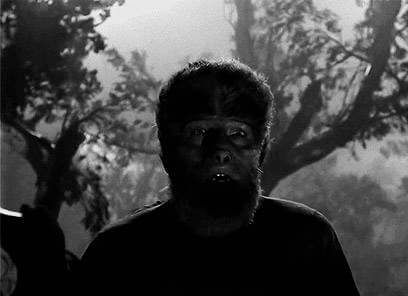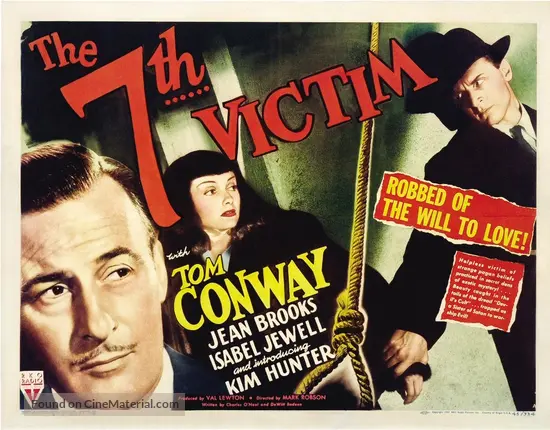Pages
▼
Thursday, October 31, 2019
Tuesday, October 29, 2019
TCM Movie: "Mark of the Vampire" (1935)
"Mark of the Vampire" (1935) was the first Tod Browning remake that involved the man himself. Five years earlier, MGM producer Irving Thalberg called for a remake of "The Unholy Three" (1925) which had been the second film out of the ten Browning made with star Lon Chaney. Chaney reprised his role as Professor Echo but was directed by Jack Conway before passing away of a throat hemorrhage seven weeks after its release. But Thalberg wanted to capitalize on MGM's contribution to horror in the style of Universal's "Dracula," so he handed the project over to writers Guy Endore and Bernard Schubert. This time, Browning would return from Universal to redirect his own film, but without the man who he worked so well with. Makeup artist Bill Tuttle remembered "if the crew didn't do something right, Browning would grumble: 'Mr Chaney would have done it better." (Bojarski. The Films of Bela Lugosi. 1980)
But the ensemble, including Chaney's previous star in "Dracula" Bela Lugosi and Lugosi's onstage protege Carroll Borland, were completely in the dark when it came to the ending of the film they were shooting. Browning withheld the ending for as long as he could. "When [Borland] and Bela found out on "The last day" that they were only playing actors, they were disappointed. Both found it "absurd"[...] The last pages inserted into the final shooting script, dated January 18, seem to prove that the cop-out conclusion was not revealed until the end of the production." (Lennig. The Immortal Count: The Life and Films of Bela Lugosi. 2010) Browning even rejected an alternate ending with an additional
"Mark of the Vampire" finished shooting mid February 1935 but wasn't released until late April. 15 or 20 minutes were mysteriously cut. Even a few deleted scenes involved "large South American bats" which a contemporary New York Times news item pointed out that the government ordered the deportation or killing of after the film was finished. The "old crone" (Jessie Ralph) is scared off by a bat in the cemetery before returning to her "tumbledown, weather-beaten shack" where she abuses her "thin...
Browning's newest vampire film was released April 26, 1935, earning a profit of $54,000. Frank S. Nugent of The New York Times moralized "let it be enough merely to add that, for all its inconsistencies, "Mark of the Vampire" should catch the beholder's attention and hold it, through chills and thrills, right up to the moment when the mystery of the vampires of Visoka is solved. Like most ghost stories, it's a lot of fun, even though you don't believe a word of it." The Motion Picture Herald lauded "This is a picture which should give the 'horror' fans all they want. It's full of shrieks and screams, gasps and shudders. The stuff commonly supposed to change red blood to ice water starts right at the beginning; a little slowly, perhaps, as the explanatory groundwork is being laid.
Nearly a month later, Dr. William J. Robinson wrote
"Mark of the Vampire" will be shown on TCM at 1:15 AM CST/2:15 AM EST
Friday, October 25, 2019
Wednesday, October 23, 2019
#WomanEmpowermentWednesday #HalloweenEdition Ardel Wray
Ardel Wray was born on October 28th, 1907 in Spokane, Washington to two stock theater actors who separated when she was young. She spent most of her childhood living with her maternal grandparents while mother, actress Virginia Brissac (best known playing James Dean's grandmother in "Rebel Without a Cause"), worked. Ardel
Wray would help with RKO's Young Writers' Project, which was designed to identify and cultivate talent at the studio. It's possible that producer Val Lewton found Wray through the project or editor films including
When she signed a contract with Paramount in the beginnings of the McCarthy era, she was asked into an office and asked to point to names on a list of communist sympathizers, Wray declined and her credit on "Bride of Vengeance" (1949) was removed and she was released from her contract. According to her estate records and family history, she "described the person she met with as nervous and "obviously embarrassed" [...] at one point offering whispered advice that "They've already been named, dear - you won't be hurting anyone." She wouldn't be pointing a finger to a name she didn't know and her relationship with Dalton Trumbo was over a decade old and possibly generated by gossip. She was put on the "graylist ," ruined her relationship with her mother, and lost her career in movies for 12 years until starting to write for television. To support her daughter, Wray fact-checked and novelized films for newspapers and was a reader in various studio story departments. Wray was forced to retire after her eyesight started to fail and after cataract surgery and recovery, she officially retired in 1972. She would pass away of breast cancer on October 14, 1983 and Wray's ashes were scattered at sea.
Monday, October 21, 2019
#ManCrushMonday #MemorableSupportingActor #HalloweenEdition Dwight Frye
Dwight Frye was best known as a comic actor on stage and the silent screen before being nicknamed as "The Man with the Thousand-Watt Stare" and "The Man of a Thousand Deaths" with his portrayals as madmen in horror movies. He is best known as the insane Renfield in Tod Browning's "Dracula" (1931).
Frye was born in 1899 in Salina, Kansas to farmers, but with their surname spelled without an "e," and moved to Denver Colorado at a young age. At age 9, Frye had ambitions to be a concert pianist, having started playing at a young age until having been bit by the bug when he performed in his high school theater production of "The Honeymoon." To soothe his highly religious parents' nerves of his acting ambitions after having graduated, Frye worked at a business firm while being trained by Douglas Fairbanks's acting teacher Margaret Fealy.
Hollywood didn't come calling, but Frye moved to Los Angeles after the stock market crashed and started in the theater instead. The decision paid off and he received his first screen credit in 1930's "The Doorway to Hell." He would be cast as the realtor-turned-madman "Renfield" in "Dracula" (1931) which he immediately sank his Method teeth into. The success of the film led to even more character roles in "The Maltese Falcon" (1931) and "Frankenstein," where he played a hunchbacked assistant to the doctor. He continued to do theater in New York and touring the East Coast while coming back to Hollywood for his already typecasted character actor career which wore on him considerably. His character Karl in "Bride of Frankenstein" had less screen time due to edits for the running time and the budding production code. With "Son of Frankenstein," Frye's small part was completely cut, having to resort to a night job as a tool designer at the Douglas aircraft company to make ends meet. His last horror film was "Frankenstein Meets the Wolfman" (1943). In 1943, Frye was able to pick up a role as Woodrow Wilson's secretary of war in Fox's color biopic "Wilson," but had a heart attack in a bus aisle after taking his family to a double-bill show of "A Lady Takes a Chance" and "Sherlock Holmes Faces Death" at the Pantages Theater on November 7, 1943. Frye passed away just before getting to the hospital at the age of 44. On his death certificate, his occupation was listed as a tool designer.
Links to Check Out
Dwight Frye | Stuff You Missed in History Class
Thursday, October 17, 2019
Deathmatch: "The Wolf Man" (1941) vs. "Werewolf of London" (1935)
History
Assistant producer Robert Harris had an idea. 4 years after 1931's "Daughter of the Dragon" which he barely got a listed credit for, there had to be a sales pitch he could sell to Universal in order to be hired. There had not been many movies about werewolves except for Universal's attempt at the indigenous legends in the 1913 silent "The Werewolf" which had gone up in flames during the 1924 East Coast Vault fire. Whether Harris may or may not have known about the Henry McRae silent, there was a decent chance that a lot of the popular myths of the Universal monster had been decided on either during his job interview or once screenwriter John Colton started writing the script.
What ended up becoming "Werewolf of London" built its legs on the made-up folklore that
 |
| Left: Preliminary Jack Pierce Makeup on Henry Hull Right: Final Makeup for Hull by Jack Pierce |
As a stage actor of the early 1900s, Hull was no stranger to applying his own makeup and had known Jack Pierce's work, considering it a little more outlandish for his tastes. "The makeup Pierce planned resembled his later "Wolf Man" design for Lon Chaney Jr. Henry
"Werewolf of London" premiered May 13th, 1935 at the Rialto Theater a week before it was demolished. Maybe it came out too soon after Rouben Mamoulian's explosive box office hit "Dr. Jekyll and Mr. Hyde" (1931) and "Werewolf" flopped at the box office. "In the vein of "The Invisible Man,"" wrote Frank S. Nugent of The New York Times, "the picture races along
While Robert Florey was directing "The Murders of the Rue Morgue" (1932), he wrote a treatment entitled "The Wolf-Man." Barely influenced by the 1913 silent, this werewolf tale was about Kristoff who was stolen when he was young and suckled by a she-wolf in the Perollean Alps. When he grows up, Kristoff ends up becoming a werewolf. Florey had hoped Boris Karloff could star in the film, but pre-code Universal was concerned about the scene where Kristoff transforms while in a church confessional worrying that it would upset Catholics. The treatment was completely abandoned until Universal asked Curt Siodmak to write something completely new. According to Siodmak, "I was given the title and a deadline: seven weeks for the screenplay." ("The Wolf Man": Universal's King Beast - Force Fed Pollution)
Siodmak happily researched European werewolf myths that "Werewolf in London" had missed, also taking the opportunity to interjecting the psychological aspects of Freudian theory he was already learning for himself into his script. But his first draft, known as "The Larry Gill Script," was incredibly different than what ended up becoming Lon Chaney Jr.'s vehicle. Instead, the American Larry Gill comes to Wales to install
What was originally titled "Destiny" began shooting on October 27, 1941 and wrapped November 25th of the same year. Jack Pierce was finally able to use his preliminary Hull makeup
Art director Robert Boyle created the forest scenes with trees and stumps found on Universal's back lot, which were painted black and coated with glycerin. "When they filmed different scenes, the crew would simply move the trees and stumps around and film from a different angle." But the fog was a problem all by itself, being a thick smelly substance that cast and crew found it difficult to breathe around. Evelyn Ankers had completely passed out when out of shot when they filmed the ending scenes.
"The Wolf Man" premiered December 9, 1941 in Los Angeles and opened across the United States three days later. The film critics were ruthless and unforgiving, but the numbers at the box office said differently raking in over a million even in the days following the bombing of Pearl Harbor. "The Wolf Man is a compactly-knit tale of its own kind," Variety attempted diplomatically, "with good direction and performances by an above par assemblage of players, but dubious entertainment.
"Whoever is bitten by a werewolf and lives becomes a werewolf... Instinctively seek [ing] to kill the thing he loves best"
The next full moon, Wilfred kills an innocent woman in the zoo. Wracked with guilt and scared of losing his wife to her childhood sweetheart, he rents a room in an inn and locks himself in. Once wolfed out, he escapes and kills while in his laboratory, the third
Lawrence Talbot comes back to his home country of Wales to his estranged father after discovering his brother had died. He immediately becomes enamored with a girl (Evelyn Ankers) who works in her father's antique shop and somehow manages to buy a walking stick with a silver wolf on its head although with designs on flirting with her. Larry manages to convince Gwen to come with him to get their fortune told by the Romany who entered the town that day. Gwen invites a friend to come with her instead and who ends up being killed by a Romany werewolf (Bela Lugosi), but Larry tries to intervene but gets scratched before killing Bela the Gypsy. Bela's mother warns Larry that he too will turn into a werewolf while the law enforcement have lesser supernatural suspicions that he simply killed a human.
Talbot tragically transforms, but doesn't remember anything of the night before. He continues to be wracked with guilt of slowly reemerging memories while everyone around him suspects his sanity. His father, Sir John (Claude Rains) even goes to the lengths of tying him to a chair while the police are looking for who is supposed to be the guilty party, but Larry wolfs out and escapes into the forest. There he finds Gwen and attacks her until his own silver walking stick bludgeons him by the hands of his own father.
Both movies signify their respective decades perfectly. "Werewolf of London" follows in the vein of earlier Universal films like "Frankenstein" (1931) in the lengths men go in the name of science versus faith and wanting to know more about the scientific world of what makes life, life and death, death. Wilfred Glendon is a victim to this like Henry Frankenstein and even Doctor van Helsing in "Dracula" (1931) and pays for it, making the transformation into a werewolf heartbreaking and yet painfully self aware all at the same time. "Thanks... Thanks for the bullet" Glendon is able to speak as the werewolf melts away from his body, "It was the only way... In a few moments now... I shall know why all this had to be." It's a far more purposeful werewolf story against the fine outlandish Greek tragedy that is 1941's "The Wolf Man" where Larry Talbot just tumbles in on the werewolf legend and simply rides along with it.
"The Wolf Man" is also a product of its time in a far more accidental vein paralleling the sequence of events that brought America into the great mess that was World War 2. It's also very much a "monster movie" versus the first Universal wave that was unconsciously affected by the reacting or coinciding with immigrants both in front and behind the camera. The "monster movie" as a genre only had 2 goals in mind. Seat-filling and box office. It doesn't matter how paper thin the quality which explains Larry Talbot tumbling in onto the situation scene after scene without a lot of character development except for his reacting to inner torment. But Lon Chaney Jr.'s ability to draw the audience in is truly a feat alongside the talents of his costar the great Claude Rains. The script does suffer from splotches of previous drafts, the telescope scene out of the complete blue, it is very much a character-driven movie than a fantastic plot like "Werewolf of London" which never quite gets the suffocating Browning/Freund post-Weimar treatment "Werewolf" truly deserved.
Essentially, it's a toss-up, but Jack Pierce's work on "Werewolf of London" is mountains better and creepier.
AND YOU CALL YOURSELF A SCIENTIST! - Werewolf of London (1935)
Tuesday, October 15, 2019
TCM Movie: #SilentEdition "Nosferatu: Eine Symphonie des Grauens" (1922)
During the winter of 1916, German soldier Albin Grau served where he had described as "a vermin-extermination commando" remote village in Serbia. He was told during his tenure by an old Serbian farmer about his father who had been buried without
In 1921, the
Shooting started during July 1921 and its first shots were exteriors in Wismar. It was shot entirely on location in Wismar and Lubeck, the Transylvanian scenes shot in northern Slovakia.
"Nosferatu" premiered March 4th, 1922 at the Marble Hall of the Berlin Zoological Gardens.
J - S from Berlin's Film-Kurier called "
After the successful premiere, Bram Stoker's estate immediately sued "Nosferatu" as a copyright infringement as some of the early drafts and shooting scripts still had the Dracula name attached to it despite all of the changes
"Nosferatu" will be shown on TCM on October 24th at 4:45 AM EST/3:45 CST
Cool Links to Check Out
Dracula vs. Nosferatu: A True Copyright Horror Story - Plagarism Today
or reload the browser
Friday, October 11, 2019
Wednesday, October 9, 2019
#WomanEmpowermentWednesday #HalloweenEdition Gene Tierney as Lucy Muir in "The Ghost and Mrs. Muir" (1947)
Lucy Muir is a widowed single mother on the mission to get out of her mother-in-law's house. Lucy finds herself in the seaside town of Whitecliff looking at a house that she immediately discovers is haunted by the spirit of a sea captain who supposedly killed himself. She doesn't care what anyone in the town says about the infamous house and buys it. Eventually Lucy must choose between being alone in love with the ghost of the sea captain or marry a man who she believes to be unmarried.
Monday, October 7, 2019
#ManCrushMonday #HalloweenEdition Karl Freund's 6 Most Beautiful Horror Shots Of His Career
| "Dracula" (1931) |
 |
| "Berlin: Die Sinfonie |
 |
| "Metropolis" (1927) |
| "Murders in the Rue Morgue" (1932) |
 |
| "Dracula" (1931) |
 |
| Metropolis (1927) |
Thursday, October 3, 2019
#RemakeThis #HalloweenEdition "Frankenstein, or, The Modern Prometheus" by Mary Shelley
Universal Pictures acquired the film rights to "Frankenstein" on April 31, 1931, but it was not the "Frankenstein" what many people believe to be as Mary Shelley's masterpiece. Technically, Universal Pictures acquired the rights to an
Lugosi did some test makeup footage which made "Junior" "laugh
James Whale was brought from England and to take his pick of anything that fascinated him. He immediately grabbed "Frankenstein" and hired Francis Edward Faragoh to cut back on the Doctor's part. The Creature doesn't even speak except for a litany of grunts whereas Shelley's learns to speak and educates himself in defiance over his maker. Screenwriter John Russell also has a credit for the idea that Fritz would drop the "normal" human brain and resorted to taking the other criminal one instead. Variety would describe one of Universal's first horror films as "
 |
| Harry Treadaway as Victor Frankenstein |
 |
| Rory Kinnear as The Creature |
 |
| Domhnall Gleeson as Captain Robert Walton |
 |
| Mia Wasikowska as Elizabeth Lavenza |
 |
| Kyle Soller as Henry Clerval |
| Jason Isaacs as Alphonse Frankenstein |
Links to Check Out
‘Frankenstein’: James Whale’s Macabre Take on One of the Most Sympathetic Characters Ever Created in the World of English Letters | Cinephilia & Beyond
Tuesday, October 1, 2019
TCM Movie: The Seventh Victim (1943)
Screenwriter Dewitt Bodeen believed he had a hit in his first draft of "The Seventh Victim." It was going to be about an orphaned girl from Los Angeles who discovers she's going to be killed by a serial killer. But while researching his next script for "The Curse of the Cat People," he got a call from his producer, Val Lewton. "When you come back you're going right on to a new story for the Seventh Victim because we discarded the one you originally wrote and I've already put Charles O'Neal on it and you'll be working with him." (Bansak, Edmund G. Fearing the Dark: The Val Lewton Career) But it was the next letter that seemed to be a more impossible request. "See if it's possible for you to get to a devil-worshipping society meeting."
"So I got to one through RKO because they had a marvelous office here in New York. I went to them and said, is there any chance of me going to a devil-worshippers' meeting and they started laughing, but they called back and said, yes, it had been arranged. But I would have to go under a pseudonym. The society would be glad to have
"The Seventh Victim" really was shaping out in Val Lewton's favor even before
Shooting began May 5th, 1943 to May 29th in RKO Gower Street in Los Angeles and Lewton took as much advantage of the pre-established sets like he had done in his last three films. The remains of "The Magnificent Ambersons" was used at the beginning
But "The Seventh Victim" was written with an A budget in mind and four vital scenes were deleted at the expense of keeping under the 75 minute mark as per the contract with RKO. Mary admits "it would be easier of Jacqueline were dead" to Gregory Ward when he visits her at the daycare center where she works. It is referenced at the beginning of a later scene where Mary's supervisor says to her "Aren't you the popular one? You've a visitor again." Two more scenes highlight Judd's investigation on the Palladists in visits to the amputee pianist Natalie Cortez. In the first scene they discuss philosophy and Cortez
In the scene that follows Jacqueline's suicide and what is meant to be the ending, Mary, Gregory and Jason all gather at the Dante restaurant. Mary and Gregory leave together in their happy ending, but Jason still sits before the mural of Dante and Beatrice and talks to himself. "I am alive, yet every hope I have is dead. Death can be good. Death can be happy. If I could speak like Cyrano
"The Seventh Victim" was released August 21st, 1943 and was copyrighted five days later. It opened on September 17 at the Rialto Theater in New York City. The promotions department of RKO barely did anything for the film except for offering a suggestion to theater owners. "On a table in your lobby, display a statue, a bust and a head of a woman.
A South Carolinian cinema proprietor was disappointed with the movie. "We must have been the eighth victim; patrons walked out. Business poor. Some of the kids would not sit through it." A theater employee in Scotia, California said it was "without the doubt the most unsatisfactory
"The Seventh Victim" will be shown on Turner Classic Movies October 10th, 2019 at 9:45 pm CST/10:45 EST















